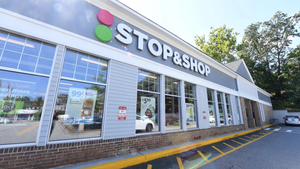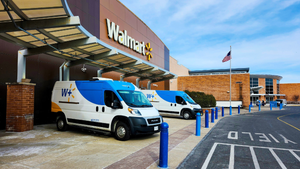BEARING FRUIT 2005BEARING FRUIT 2005
When they enter the produce department, consumers expect to find fresh fruit that's ready to eat.As a result, retailers are going the extra mile to meet the growing demand for ripe fruit. Whether through ethylene pre-conditioning, newer technologies, better ordering, or simply closer relationships between buyers and growers, retailers that consistently offer produce that's ready to eat have found
April 25, 2005
Matthew Enis
When they enter the produce department, consumers expect to find fresh fruit that's ready to eat.
As a result, retailers are going the extra mile to meet the growing demand for ripe fruit. Whether through ethylene pre-conditioning, newer technologies, better ordering, or simply closer relationships between buyers and growers, retailers that consistently offer produce that's ready to eat have found it gives them a distinct competitive advantage.
"It is a challenge, but it's also a tremendous opportunity," said Bruce Axtman, president and chief executive officer of The Perishables Group, West Dundee, Ill. "Providing pre-conditioned or ripened fruit generates a much higher level of performance in the category. So, it certainly is a priority for many retailers to figure out how to offer it."
There are always risks associated with a shift to pre-conditioned or ripened fruit. Perhaps the biggest issue is the concern among produce managers that shrink will increase due to spoilage, said Dick Spezzano, president of Spezzano Consulting Service, Monrovia, Calif. A well-executed program, however, generally leads to more sales and higher turns.
"Customers buy that way," he said. "They prefer ripe fruit. Even if they're buying twice per week, they want something they can use that night or the next day. They don't want to buy something that they're going to have to leave on a countertop for four, five or six days."
Spezzano, who was vice president of Vons' produce and floral division for 14 of his 34 years with the company, led the development of the chain's pioneering ripe produce program. Early on, he noted, few growers had ripening programs in place. Packaging techniques and technology used to prevent bruising of riper fruit during shipment were not as widespread in the 1980s. So, many growers even expressed resistance to the idea.
Vons eventually developed a program with a distributor. As the ripe fruit programs began to show clear promise (first-year sales spikes were up to 200% on some items), regional growers of tree fruits, avocados, tomatoes and pears started to take notice.
"We worked with some growers very closely. If there wasn't a ripe program in place, we helped develop one," said Spezzano. The company approached the programs cautiously, at first limiting the amount of ripe fruit offered. The initial goal for avocados, for example, was for Vons to offer 20% ripe and 80% green.
"Once we achieved that goal, one of our produce managers suggested we try two different displays, thinking that what customers would do would be to buy one from the ripe display, and buy two from the green display for later," he said. "We checked it, and it worked. It increased our sales. By the time I left Vons [in 1997], we were selling 80% ripe and 20% green."
Highlighting ripe, in-season fruit with special promotions can also draw attention to the produce department and demonstrate a commitment to quality. At Dorothy Lane Markets, Dayton, Ohio, a meeting last year between Jose Manzano, DLM's produce director, the company's wholesaler, and a San Joaquin Valley, Calif.-based peach grower resulted in DLM's first month-long "Peach Party" in July 2004. The event was so successful that Manzano said the company will host it again this year.
Customers who visited DLM's three locations found huge displays of peaches -- all ripened to perfection -- with posters highlighting the brix level of each daily shipment, and explaining to curious customers that the fruit's brix level is an indicator of both how ripe the peaches were and how sweet they would taste.
"The customer was able to see that we had a commitment to a certain level of sweetness," Manzano explained.
The program, of course, hinged on consistency. After all, the fruit was a fresh product arriving from a grove 2,300 miles away. The grower had agreed to meet DLM's specifications, which meant only peaches with a brix level higher than 13, and specially packaged to avoid bruising during the long trip. To ensure compliance, Manzano gave each of his produce department managers their own refractometer, a handheld tool often used by vintners, candy makers and produce warehouse managers to calculate brix, or sugar density.
If any shipment had not met their standards, Manzano said DLM was prepared to not run the promotion that day with lower-quality product. Fortunately, the grower delivered consistently, and Manzano said the promotion had helped cement their relationship. "This company made a commitment to us to meet our expectations," he said. "So, throughout the season, we stuck with them. We don't go from company to company. "
Well-executed ripeness programs depend on those types of relationships and that level of consistency. Spezzano said a common mistake some buyers make is trying to take advantage of deals that will occasionally emerge with other growers.
"If you are on a [ripeness] program and your regular supplier is selling avocados for $24 a case, even if the rest of the market is at $23, you can justify that because you're paying for consistency," he said. "If the market drops, though, and a buyer gets a call from someone selling at $19 per case, a lot of times they'll end up taking advantage of that low price. It can screw up the program. You have to be very disciplined, or you'll end up with a mix of ripe avocados and green avocados, and you'll end up turning your customers off."
For smaller companies, local sourcing is another way to ensure peak flavor at retail and earn customer loyalty, according to John Odahara, produce director for Lazy Acres, Santa Barbara, Calif.
"Local consumers really identify with farmers in this area," he said, noting that Lazy Acres incorporates the names and logos of local farms in its advertising and store signs. Working closer with local growers has even led to symbiotic relationships between the store and local farmers' markets. Lazy Acres helps farmers build their local reputation through the ads, and farmers tell their loyal customers to go to Lazy Acres to buy their products on days when the farmers' market is closed.
Of course, freshness is the other advantage. Since the products don't have to travel far, they can be picked nearer to full ripeness.
"Dealing with local growers makes it so much easier, especially in the tomato commodity line," said Odahara. "The tomato growers out here will pick at full ripe for us. Right now, we're starting to transition to several other local products. We're having to pull out of Mexico because the products we've been buying from there just don't have the taste or the flavor that they do when they're in season here. That is a distinct advantage."
Manzano and Odahara viewed the smaller size of their companies as a distinct advantage. Odahara said produce buyers at smaller companies could have more direct contact with small local growers. Manzano noted that having one or two small suppliers that can meet all of a company's needs with a particular item gives buyers more oversight and better control over promotions like DLM's Peach Party.
Still, while that personal touch may remain a competitive advantage for smaller produce departments, new technologies have emerged that allow large companies to offer ripe items as well. Spezzano said new packing technology, such as Sinclair tappers that use automated sensors to separate large harvests of fruit based on ripeness, make these programs possible, provided that receivers in a chain's warehouse are well trained.
"You talk to your favorite supplier of avocados, for example, and say that you want them to arrive at your warehouse at between eight and 10 pounds pressure. You train your receivers to test for that eight to 10 pounds pressure on every shipment. Once you've communicated that to your vendor or vendors, then it's easy."
New packaging technology may hold some promise for larger retailers, too.
The ripeSense label, which debuted in late 2003 after several years of development in New Zealand, changes color based on ethylene levels inside clamshell packaging, taking the guesswork out of selection for customers. Initial tests on pears at Zupan's, a chain of six upscale stores based in Vancouver, Wash., generated positive feedback from customers and department managers, according to Kevin Moffitt, president and chief executive officer of the Pear Bureau Northwest, Milwaukie, Ore., which helped organize the test. The program has since expanded to six packing houses and has been tested by several other retailers. Auckland, New Zealand-based Jenkins Group, owners of the ripeSense technology, has said it plans to develop similar packaging and labels for kiwi, mangos, melons, stonefruit and avocados.
However, educational challenges remain at store level. Customers will simply gauge by experience whether a store consistently offers ripe produce, but few have a comprehensive understanding of the nuances of pressure, color and smell that indicate the ripeness of various fruit in mixed displays. Also, many may not be aware that some items, such as ripe pears, should be held in refrigeration while others, such as tomatoes and bananas, should be kept at room temperature. Finally, when trying new or unfamiliar items like exotic tropical fruits, or even different varieties of peaches and pears, customers have no point of reference. They can be permanently turned off by selecting an under- or over-ripe item.
Several leading retailers, including Wegmans, Giant Eagle and Whole Foods, offer detailed tips on produce selection, storage and handling on their Web sites. Spezzano said sampling programs are a good -- though expensive -- way to introduce customers to new items, and teach proper selection and storage.
Moffitt said point-of-sale materials can help explain to customers that some products are ready to eat immediately, while others need to be ripened after harvest. However, he added these types of solutions aren't ideal.
"A lot of consumers would really rather have it ready to eat. That's the real challenge," he said. "Customers are looking for flavor, but they're also looking for convenience."
Moffitt suggested instead that produce managers and associates take a more active role in educating their customers. For example, personally helping a customer select a ripe fruit can make a big impression.
"You hear over and over that the best way to compete against price is service," he said. "Produce managers can really impress a customer by offering a little advice."
Odahara agreed. "The best way to educate a customer is one-on-one contact," he said.
"I try to instruct all of my guys to talk to the customers and let them taste product," he said. "When we have something that we know is really exceptional, we want to let the customers try it because they'll buy it and come back for more."
About the Author
You May Also Like






